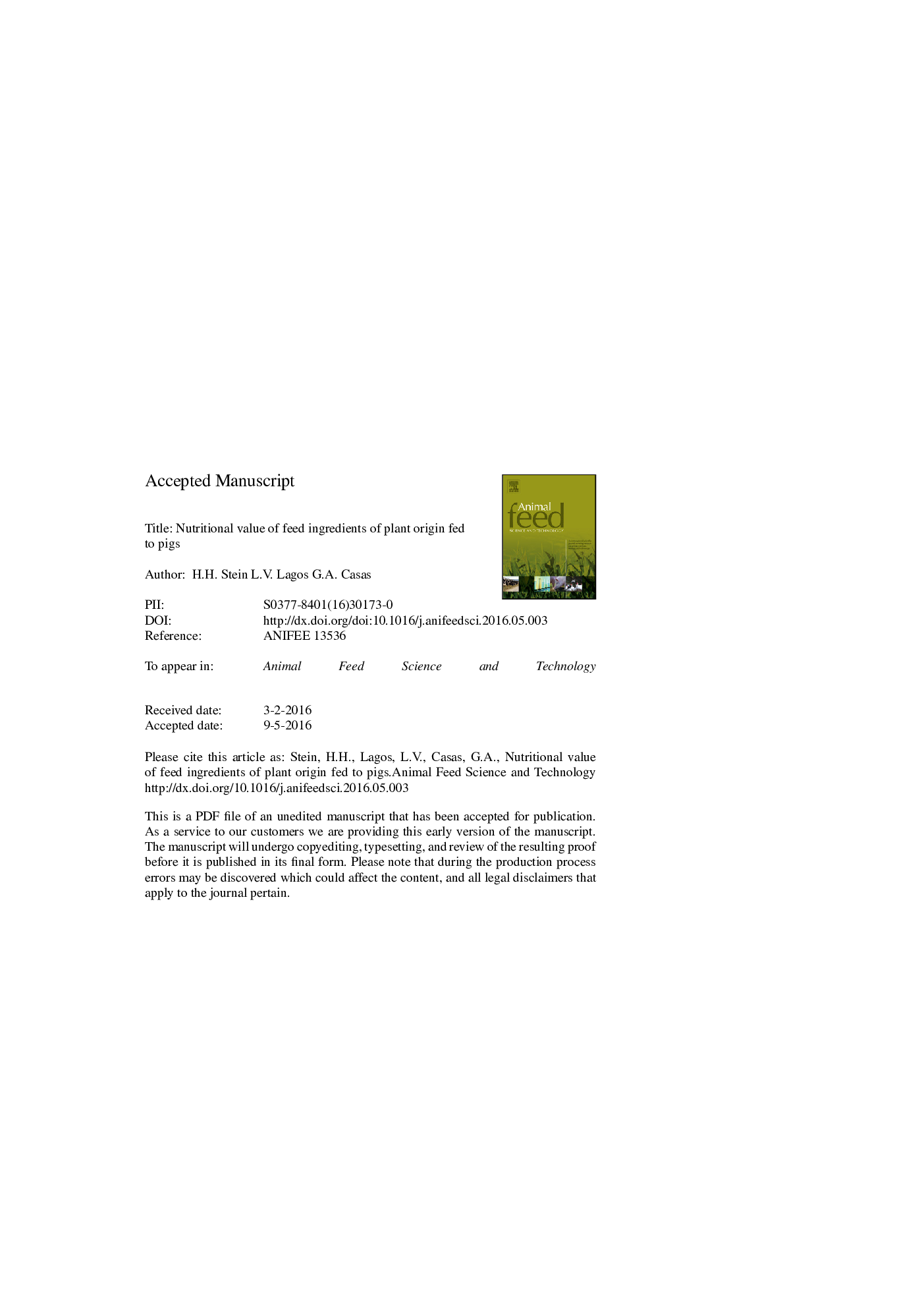| Article ID | Journal | Published Year | Pages | File Type |
|---|---|---|---|---|
| 8491204 | Animal Feed Science and Technology | 2016 | 110 Pages |
Abstract
Since the 1950'ties, most diets fed to commercially raised pigs have been formulated based on plant feed ingredients and without using animal feed sources. Cereal grains have historically been the main stable in pig diets, but because pigs require nutrients rather than specific feed ingredients, it is possible to provide a well-balanced diet that includes all necessary nutrients using a large number of different feed ingredients. Many of these ingredients are co-products from the human food industry, which often are excellent sources of nutrients. Co-products from other industrial processes, such as production of fuel ethanol, are also available and may be used in diet formulations. Over the last few years, new fermentation or processing technologies have been introduced as a way to improve the nutritional value of certain feed ingredients, which may broaden the usage of such ingredients. However, regardless of the ingredient being fed, the value of the ingredient is primarily determined by the concentration of metabolizable or net energy, the concentration and digestibility of indispensable amino acids, and the concentration and digestibility of phosphorus because energy, amino acids, and phosphorus are the most expensive components of diets fed to pigs. Ingredients may also contain anti-nutritional factors that limit the inclusion rate in the diet to all or some categories of pigs and knowledge about acceptable inclusion levels of ingredients is, therefore, required for successful use of these ingredients in diets fed to pigs. Inclusion rate of some feed ingredients may also be limited because of effects on the final products that are marketed from pigs and because any changes in the composition or characteristics of the final products may reduce the value of the product, knowledge about effects on final products are also important. Thus, for successful usage of feed ingredients in diets fed to pigs, it is required that knowledge about the chemical composition, the digestibility of energy and nutrients, and acceptable inclusion rates in diets fed to different categories of pigs is available. It is the objective of the present review to provide this knowledge for a number of plant feed ingredients that are commonly used in diets fed to pigs.
Keywords
Related Topics
Life Sciences
Agricultural and Biological Sciences
Animal Science and Zoology
Authors
H.H. Stein, L.V. Lagos, G.A. Casas,
